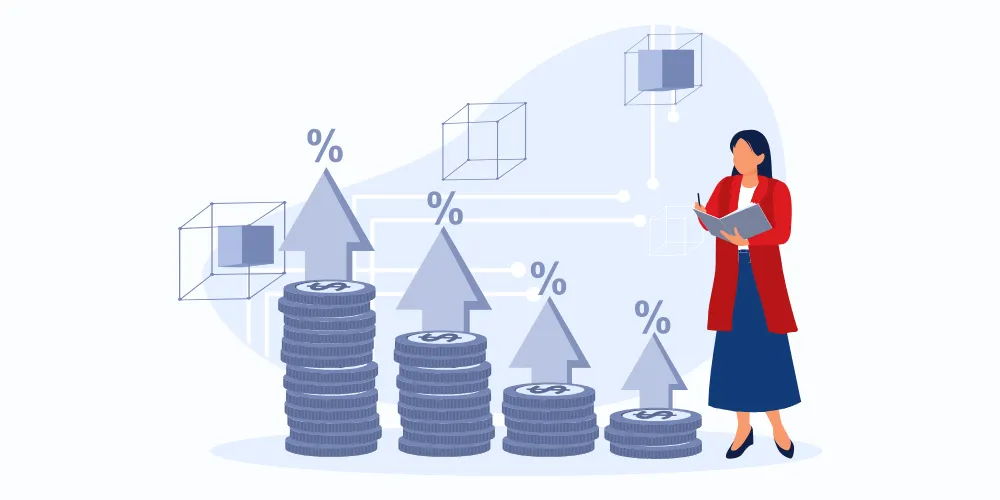Monetary incentives are financial rewards given to employees to recognize performance, boost motivation, or retain talent. These include bonuses, commissions, salary increases, stock options, and profit-sharing. They're effective in driving short-term results and are often tied directly to measurable outcomes or achievements within the organization.
Understanding Monetary and Non-Monetary Incentives for Employees
- Sujeet Pillai
- Mar 09, 2025
- 4 min read
- Last updated on Dec 05, 2025
Introduction
In today's dynamic workplaces, employee incentives have become pivotal in driving motivation and productivity. Understanding how these incentives work can help cultivate better workplace environments and improve overall business success. While the meaning of monetary incentives might seem straightforward, it's essential to distinguish them from non-monetary incentives. Both play significant roles, yet their impacts vary. In this blog, we explore monetary and non-monetary incentives and their role in nurturing an engaged workforce.
Monetary Incentive Meaning and Definition
Monetary incentives are financial rewards given to employees to encourage high performance and the achievement of organizational objectives. These incentives serve as tangible acknowledgments of employees' contributions, positively impacting both motivation and performance. Firms employ monetary incentive plans to allocate financial benefits systematically.
Examples of Monetary Incentives
Several types of monetary incentives can be seen across different organizations, including:
- Bonuses: One-time financial rewards often tied to performance achievements or project completions.
- Salary Increments: Gradual salary raises based on longevity or merit.
- Commissions: Performance-linked financial gains, common in sales environments.
- Stock Options: Opportunities provided to employees to purchase company shares at a predetermined price.
Each of these monetary incentives provides both tangible rewards for employees and motivational benefits, leading to higher productivity and a more proactive work culture.
Non-Monetary Incentives: Meaning and Definition
Non-monetary incentives serve as motivational tools without direct financial benefits. The meaning of non-monetary incentives revolves around enhancing job satisfaction and engagement through non-tangible rewards. These incentives focus on improvement in employee experience and personal growth.
Examples of Non-Monetary Rewards
Here are some notable non-monetary rewards examples:
- Recognition Programs: Acknowledging accomplishments publicly boosts morale and fosters a sense of belonging.
- Career Development Opportunities: Providing training or mentoring programs aids in employee skill development.
- Flexible Working Hours: Allowing flexible working hours encourages a healthy work-life balance.
- Additional Vacation Days: Offering extra rest days can be highly valued and rejuvenating for employees.
Each non-monetary reward contributes significantly to a positive workplace atmosphere, enhancing morale and long-term satisfaction.
Comparison: Monetary vs Non-Monetary Rewards
While monetary and non-monetary rewards work towards similar goals, they possess unique attributes. Monetary rewards are usually more immediate in their impact, but can sometimes be seen as expectations. Non-monetary rewards, on the other hand, enhance the overall employee experience and may contribute more to intrinsic motivation. Organizations need to strike a balance to address diverse employee preferences effectively.
Designing an Effective Incentive Plan
To create a balanced incentive plan that includes both monetary and non-monetary rewards, it is paramount to consider company objectives and employee preferences. An effective monetary incentive plan should align financial rewards with clear performance metrics, while non-monetary rewards can be personalized to foster engagement and retention.
Conclusion
Incentives, both monetary and non-monetary, are fundamental to cultivating a motivated and productive workforce. By understanding the difference between monetary incentives and non-monetary rewards for employees, organizations can design comprehensive incentive schemes that effectively drive motivation and retention. Remember, the key lies in tailoring these incentives to align with organizational goals while considering employees' diverse values.
Frequently Asked Questions
What are monetary incentives in the workplace?
What are non-monetary incentives, and how do they work?
Non-monetary incentives reward employees without direct financial compensation. Examples include recognition programs, flexible work hours, career development opportunities, and wellness initiatives. These incentives fulfill psychological and emotional needs, promoting job satisfaction, loyalty, and long-term engagement by making employees feel valued beyond their paychecks.
Why is it important to balance both incentive types?
Balancing monetary and non-monetary incentives creates a well-rounded motivation strategy. While money can drive performance, non-monetary rewards support emotional engagement and satisfaction. Combining both allows businesses to motivate diverse personalities, enhance workplace culture, and improve both performance and employee retention across different roles and departments.
Which incentive type is more effective for long-term engagement?
Non-monetary incentives often have a stronger impact on long-term engagement. While financial rewards offer immediate gratification, things like meaningful recognition, growth opportunities, and a positive work culture foster deeper loyalty and sustained motivation. However, the most effective approach is one that thoughtfully combines both types.




